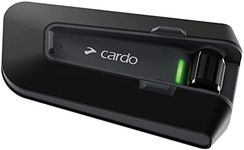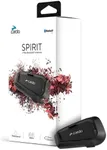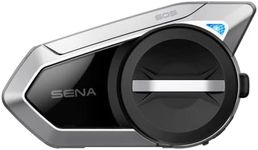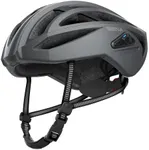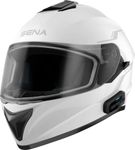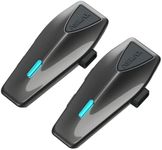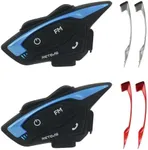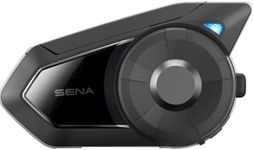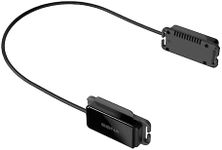Buying Guide for the Best Helmet Bluetooth System
Choosing the right helmet Bluetooth system can significantly enhance your riding experience by allowing you to communicate, listen to music, and navigate without distractions. To find the best fit for you, it's important to understand the key specifications and how they align with your needs. Here are the main factors to consider when selecting a helmet Bluetooth system.Battery LifeBattery life refers to how long the Bluetooth system can operate before needing a recharge. This is crucial because it determines how long you can use the system on a single charge, which is especially important for long rides. Battery life can range from a few hours to over 20 hours. If you often go on long trips, look for a system with a longer battery life. For shorter, daily commutes, a system with a moderate battery life may suffice.
RangeThe range of a Bluetooth system indicates the maximum distance over which it can maintain a connection with other devices. This is important for group rides where you need to stay in touch with fellow riders. Ranges can vary from a few hundred meters to several kilometers. If you frequently ride in groups or in areas with poor connectivity, opt for a system with a longer range. For solo riders or those who stay close to their riding partners, a shorter range may be adequate.
Sound QualitySound quality determines how clear and crisp the audio is, whether it's music, navigation instructions, or communication with other riders. High sound quality enhances the overall experience and ensures you can hear everything clearly, even at high speeds. Systems with advanced noise-cancellation features and high-definition speakers generally offer better sound quality. If you value clear audio and often ride in noisy environments, prioritize sound quality. For casual use, standard sound quality may be sufficient.
Ease of UseEase of use refers to how simple and intuitive the system is to operate, especially while riding. This includes the design of the controls, voice command capabilities, and the overall user interface. A system that is easy to use allows you to focus on the road without fumbling with buttons. Look for systems with large, glove-friendly buttons or voice activation if you want convenience. If you are tech-savvy, you might be comfortable with more complex systems.
CompatibilityCompatibility indicates whether the Bluetooth system can connect with your helmet and other devices like smartphones, GPS units, and other Bluetooth systems. This is important to ensure seamless integration with your existing gear. Check if the system is compatible with your helmet model and other devices you plan to use. If you have a specific helmet or multiple devices, ensure the system supports them all. For general use, most systems offer broad compatibility.
Durability and Weather ResistanceDurability and weather resistance refer to how well the system can withstand the elements and the wear and tear of regular use. This is crucial for riders who frequently encounter harsh weather conditions. Look for systems with water and dust resistance ratings, such as IPX ratings, to ensure they can handle rain, dust, and other environmental factors. If you ride in varied weather conditions, prioritize a durable and weather-resistant system. For fair-weather riders, this may be less critical.
Intercom FeaturesIntercom features allow you to communicate with other riders in real-time. This is important for group rides and staying connected with your riding partners. Intercom systems can vary in the number of connections they support and the clarity of communication. If you often ride in groups, look for a system that supports multiple connections and has a clear intercom feature. For solo riders, this feature may not be as important.
